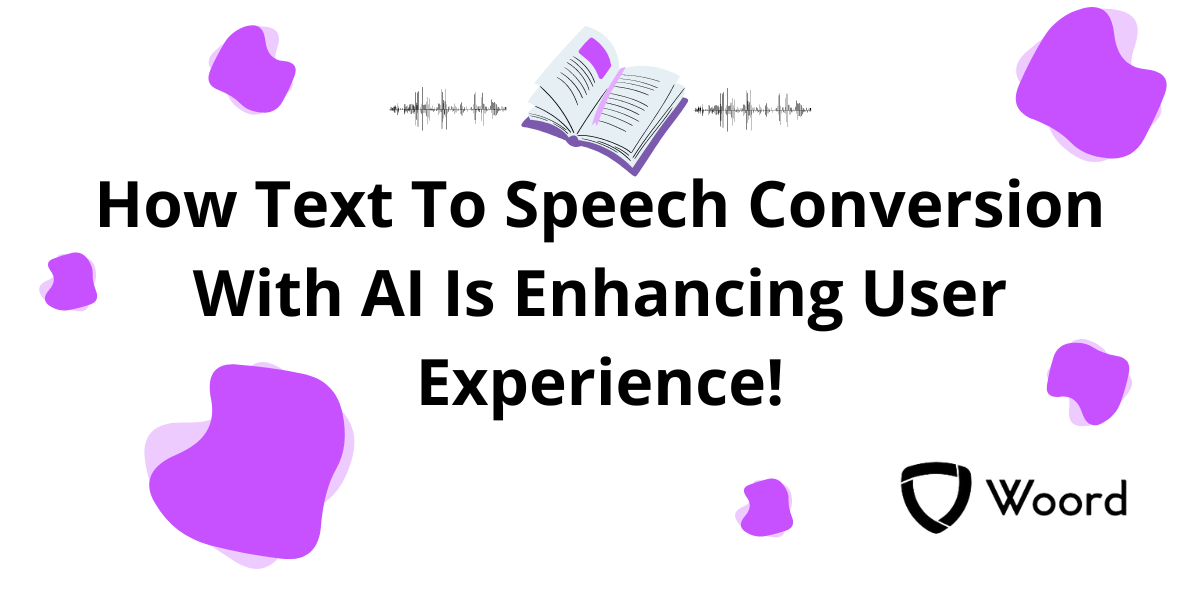How Text To Speech Conversion With AI Is Enhancing User Experience!

Text To Speech AI is a technology that converts written text into spoken words. It utilizes algorithms and natural language processing techniques to analyze and interpret written content, generating audio output that mimics human speech patterns. TTS systems often involve multiple stages, including text analysis, linguistic processing, and speech synthesis. They can handle various languages and accents, offering flexibility in communication.
These AI systems have applications in accessibility, aiding individuals with visual impairments or reading difficulties by providing auditory information. They are also used in virtual assistants, navigation systems, and customer service platforms, enhancing user interaction and convenience. Advances in TTS AI have led to more natural-sounding voices and improved accuracy in pronunciation and intonation. As technology progresses, TTS AI continues to evolve, offering more lifelike and customizable speech synthesis for diverse applications across industries.
Text To Speech AI Enhances UX
Text To Speech AI conversion with AI is revolutionizing user experiences across various domains. Firstly, AI-driven TTS offers natural and human-like speech synthesis, eliminating the robotic and monotonic tones of traditional TTS systems. This enhances user engagement and comprehension, especially for individuals with visual impairments or those multitasking.
Moreover, AI-powered TTS enables customization, allowing users to choose voices that resonate with their preferences or match the context of the content being read. This personalization fosters a more immersive and tailored experience, enhancing overall satisfaction.
Additionally, AI TTS systems can process and convert text rapidly, enabling real-time translation of written content into spoken language. This capability facilitates accessibility for non-native speakers or those encountering unfamiliar languages, thereby broadening audience reach and inclusivity.
Furthermore, integration with various devices and platforms, including smartphones, smart speakers, and navigation systems, ensures seamless accessibility to TTS functionalities. This ubiquitous availability enhances convenience and usability for users across diverse contexts.
Overall, AI-driven TTS conversion enhances user experience by offering natural, customizable, and accessible speech synthesis, enabling broader engagement and facilitating seamless integration across platforms and devices.
Check Woord: A Text To Speech AI
You may engage with text in a whole new way with the platform Woord. You can request an authentic and human reading of any article, news story, work document, or even the full book. In more than 100 voices, including those with accents, Woord accomplishes just that—it turns text into clear, high-quality audio, in 34 languages.
Whether you prefer to read or hear information, Woord offers an interesting approach to process it. With a premium membership, you can convert an endless quantity of texts, download audio files for offline listening, and even share them online via an embedded player. Additionally, Woord provides a seven-day free trial so you may check out its features before deciding to commit.
To make use of this Text To Speech AI just follow these steps:

- First, you have to go to https://www.getwoord.com/, where the text you want can be shared or uploaded. You may also use the SSML editor to write it there yourself.
- Choose your favorite voice, selecting gender, and accents. Here you will also be able to edit other settings, like the speed or pauses, for example.
- Finally, allow the platform to create your audio by clicking ‘Speak it.’ Play it once it’s finished. You may download it as an MP3 file if you’re satisfied with it, or keep editing it if not.
